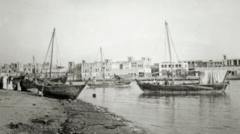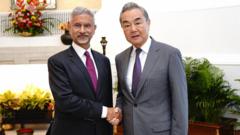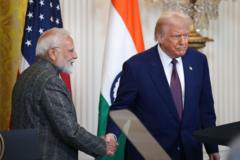In the winter of 1956, journalist David Holden found himself in the British protectorate of Bahrain, uncovering remnants of British India in the Gulf, a region that once thrived under the British Raj. His observations offered a nostalgic reflection on the legacy of colonialism in places like Dubai, Abu Dhabi, and Oman, where local customs retained strong influences from a bygone era. Describing interactions with local culture, he noted the lingering presence of "bearers," "dhobis," and "chowkidars," who served within the framework of British colonial influence. The Sultan of Oman, educated in India, spoke Urdu more fluently than Arabic, further illustrating the cultural ties between the two regions.
When Dubai Almost Became a Part of India: A Historical Perspective

When Dubai Almost Became a Part of India: A Historical Perspective
A deep dive into the ties between British India and the Arabian Peninsula reveals an era where Dubai and its neighbors were on the brink of joining India's dominion.
In the early 1900s, a significant portion of the Arabian Peninsula was effectively governed as part of the British Indian Empire. Diplomatic rulings under the Interpretation Act of 1889 classified these Arabian protectorates as Indian territory. Indian passports were issued even as far west as Aden, which served as a vital port managed under Bombay Province. Notably, when Mahatma Gandhi visited Aden in 1931, he discovered a burgeoning sense of Indian nationalism among local Arabs.
Despite British officials' awareness of this interface, the existence of British India’s influence in the Gulf often eluded public knowledge. The strategic significance of these territories warranted a shroud of secrecy, mixing British colonial interests with local governance—a detail echoed in the musings of Royal Asiatic Society lecturers.
As the political landscape shifted in the 1920s, the British began to reassess their ownership of territories considered part of India. On April 1, 1937, Aden was detached from the Indian Empire, yet British administrative purview over the Gulf persisted until shortly before India's own partition in 1947. When officials debated whether the emerging nations of India or Pakistan would oversee the Gulf, the consensus favored maintaining segregated territories.
Despite British Prime Minister Clement Attlee's intentions of a simultaneous withdrawal from the Arabian Peninsula and India, there was significant resistance. Consequently, the Gulf states remained alternatives to be managed by British authorities for an additional 24 years. The term "Arabian Raj" became a fitting descriptor, as Indian currency continued circulating and governance remained in the hands of colonial residents.
Britain ultimately withdrew from the Gulf in 1971, following a broader retreat from colonial endeavors. Holden’s observations showcased a shifting dynamic where Gulf nations began seeking independence from British oversight. The narrative of modern Gulf states often overlooks their past ties to British India, facilitating a constructed myth of independent sovereignty essential for the stability of current monarchies.
However, memories of colonial heirlooms linger, particularly in the reflection of social hierarchies established during British rule. Anecdotes highlight the once dominant presence of Indians in sectors that have since transformed dramatically. Today, Dubai flourishes as a vibrant global city, veiling its past connections to British India. As millions of Indians and Pakistanis reside there, the historical possibility that these rich Gulf states might have been part of either nation remains a fascinating intersection of history and geopolitics often overlooked in contemporary discourse.
Despite British officials' awareness of this interface, the existence of British India’s influence in the Gulf often eluded public knowledge. The strategic significance of these territories warranted a shroud of secrecy, mixing British colonial interests with local governance—a detail echoed in the musings of Royal Asiatic Society lecturers.
As the political landscape shifted in the 1920s, the British began to reassess their ownership of territories considered part of India. On April 1, 1937, Aden was detached from the Indian Empire, yet British administrative purview over the Gulf persisted until shortly before India's own partition in 1947. When officials debated whether the emerging nations of India or Pakistan would oversee the Gulf, the consensus favored maintaining segregated territories.
Despite British Prime Minister Clement Attlee's intentions of a simultaneous withdrawal from the Arabian Peninsula and India, there was significant resistance. Consequently, the Gulf states remained alternatives to be managed by British authorities for an additional 24 years. The term "Arabian Raj" became a fitting descriptor, as Indian currency continued circulating and governance remained in the hands of colonial residents.
Britain ultimately withdrew from the Gulf in 1971, following a broader retreat from colonial endeavors. Holden’s observations showcased a shifting dynamic where Gulf nations began seeking independence from British oversight. The narrative of modern Gulf states often overlooks their past ties to British India, facilitating a constructed myth of independent sovereignty essential for the stability of current monarchies.
However, memories of colonial heirlooms linger, particularly in the reflection of social hierarchies established during British rule. Anecdotes highlight the once dominant presence of Indians in sectors that have since transformed dramatically. Today, Dubai flourishes as a vibrant global city, veiling its past connections to British India. As millions of Indians and Pakistanis reside there, the historical possibility that these rich Gulf states might have been part of either nation remains a fascinating intersection of history and geopolitics often overlooked in contemporary discourse.





















